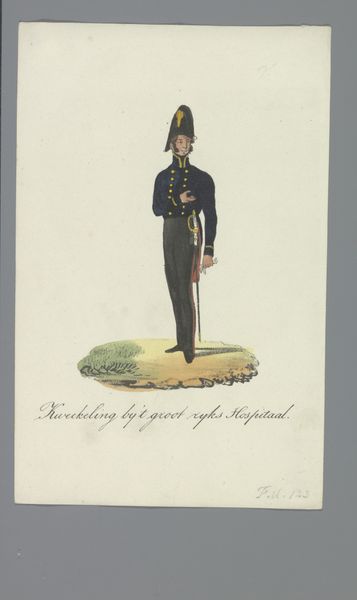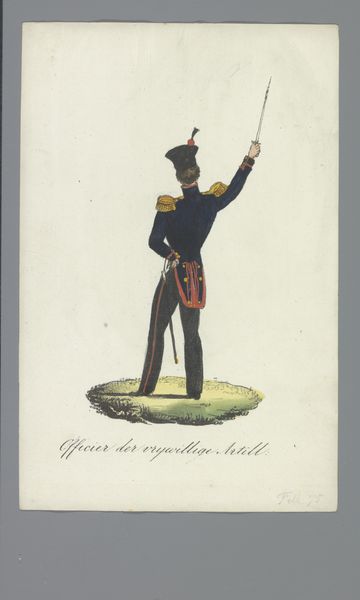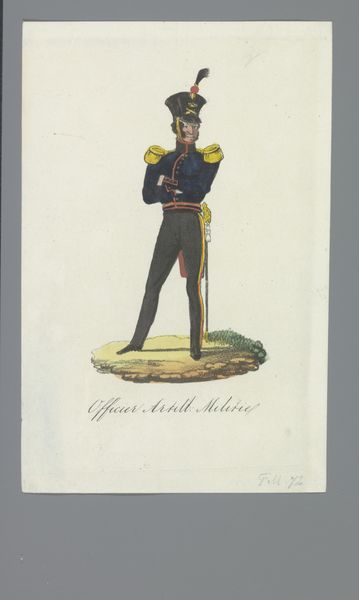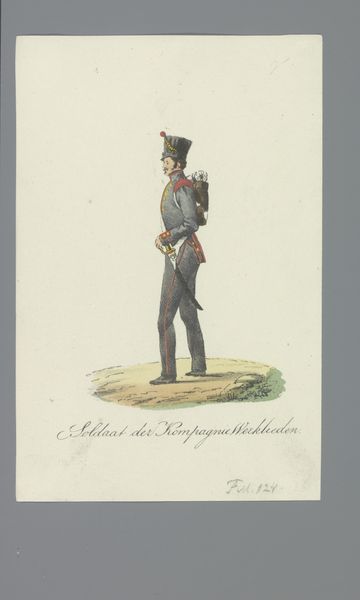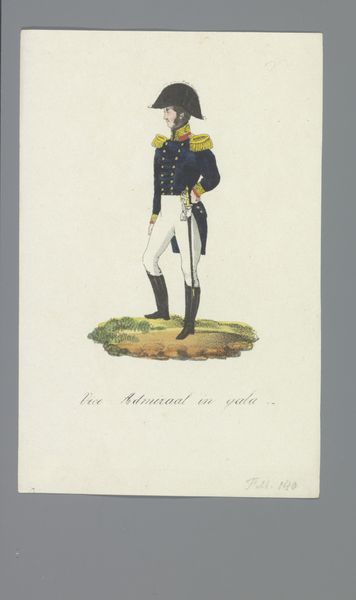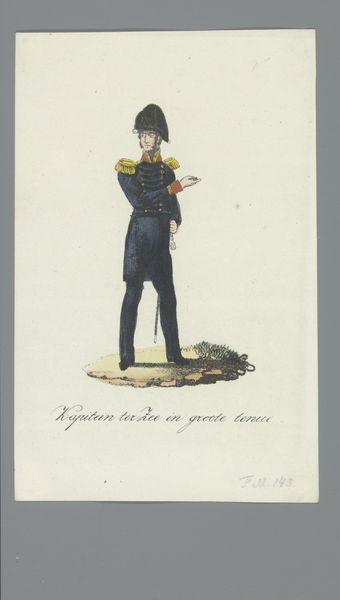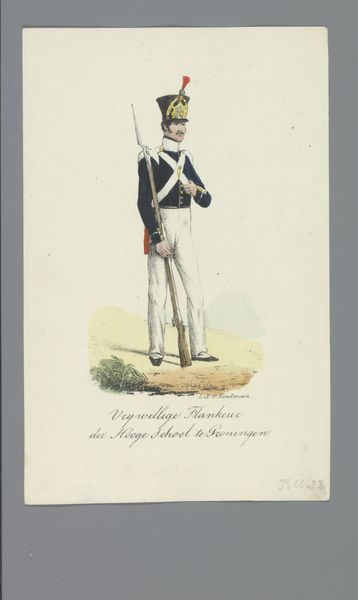
drawing, pen
#
portrait
#
drawing
#
romanticism
#
costume
#
pen
#
history-painting
Dimensions: height 170 mm, width 110 mm
Copyright: Rijks Museum: Open Domain
Editor: So, here we have "Sergeant der Vrijwillige Schutt.ij van Utrecht," a pen drawing from between 1835 and 1850, attributed to Albertus Verhoesen, residing here at the Rijksmuseum. It's quite striking—this solitary figure of a sergeant, standing stiffly. What is your take on this, seeing it now? Curator: Well, this drawing gives us a glimpse into the socio-political landscape of the Netherlands during that period. The "schutterij," or civil guard, was a volunteer militia, quite prominent in civic life. Think about it: who commissioned this? Who was it for? And how did it function as an assertion of civic pride and a way to project power? Editor: I hadn't considered the volunteer aspect, I was really focused on the military uniform itself! Is this typical imagery for the time? Curator: Precisely, consider the tradition of military portraiture and history painting. This image belongs to that visual language, yet it’s also more than that. Given that it is a drawing, in pen, this places it into another type of artistic and social category. Could it be part of a larger collection of portraits that served a documentary function of some sort? Or perhaps it's a study for a larger, more ambitious painting? Editor: A study, interesting... Maybe used for preparatory work? Also, this kind of almost… idealized presentation? Was that also for civic purposes? Curator: Indeed. Consider how such images helped to solidify social hierarchies, while promoting ideas of national identity, citizenship, and, yes, an idealized vision of duty. So, this image reflects and reinforces power structures that existed in that historical moment, wouldn't you agree? Editor: Absolutely. It seems so simple at first glance, but seeing it within a cultural and historical context gives it so much more depth. Thanks. Curator: My pleasure. Understanding the politics of imagery transforms our understanding and our experience.
Comments
No comments
Be the first to comment and join the conversation on the ultimate creative platform.
